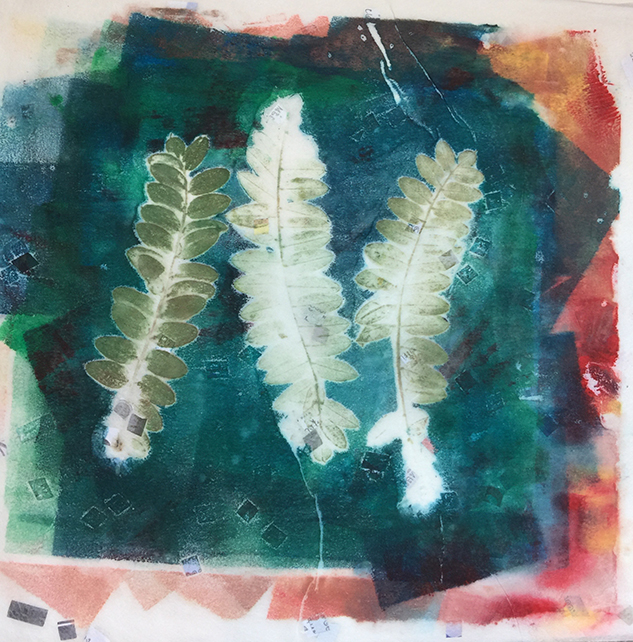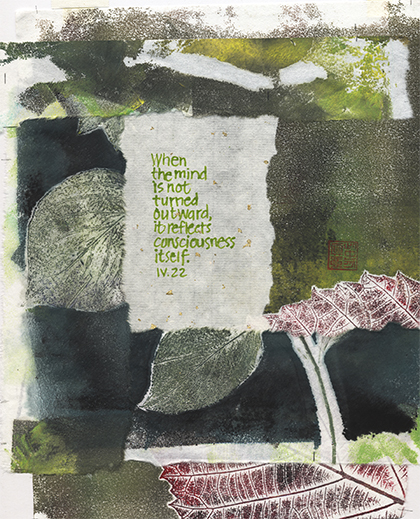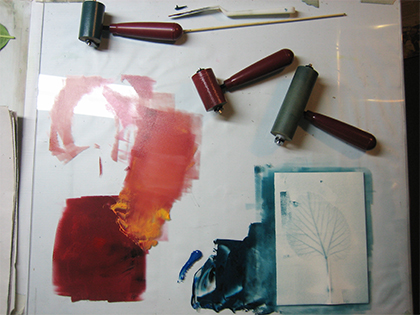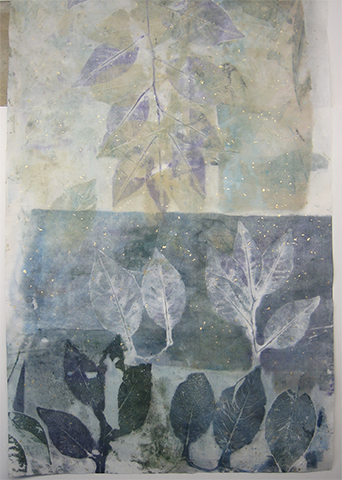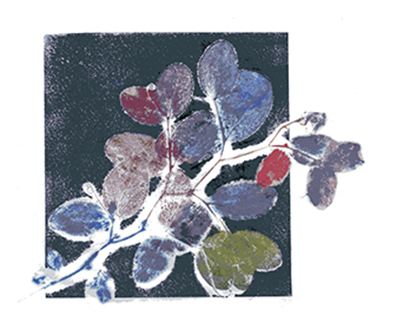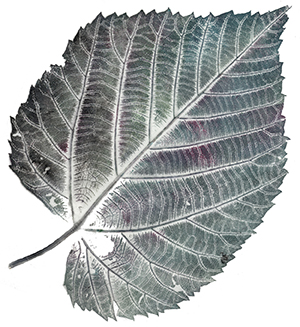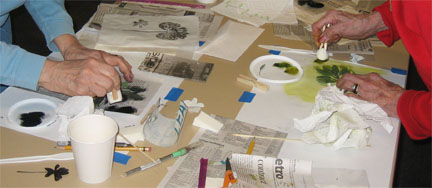Thank you for stopping in
The Fresh Art Studio Tour was great fun—as usual. Conversations with stimulating guests were abundant as was enjoying the artful surroundings of site 12, with its ceramics and paintings by Kaye, raku by Mark, jewelry by Pat, gardens, guinea hens, chickens, my nature prints, and very wet grass + mud. During the 24 hours between Friday and Saturday afternoon, we received 5.5″ of rain.
If you’re a printmaker, you know that humid weather keeps the ink “open” and the paper damp, making last weekend ideal for printmaking. As guests strolled through Kaye’s studio, I kept printing. You may have joined in the fun and made a print to take home.
The print below shows three leaves from the prairie plant Leadplant (Amorpha canescens). One guest used red and gold ink; the next guest wanted a cooler palette of green, turquoise, and blue ink. I seldom clean the freezer-paper palette between guests, due partly to laziness but mainly because it’s exciting to see what the results may be when working with the colors and patterns left on the palette. Sometimes I refer to these as “residual” prints, honoring the “remains” left by previous printers. To the inky palette, I inked and added the three leaves.
I will give this print to dear friends Lynn and Wayne, whose 40th wedding anniversary was the day after they watched this print being pulled from the inky palette. You may be wondering what the small floating squares are in the background of the print. They’re in the paper, a sheet called Bangkok News, an affordable Oriental paper I purchase at Wet Paint, of course.
If you plan to take up the artistic sport of nature printing, Wet Paint has all of the supplies. Stop in to their shop on Grand Avenue in St. Paul, Minnesota, or contact them to fill a mail order for these simple, affordable supplies:
• 2” Speedball soft-rubber brayer
• Speedball water-soluble printmaking inks: black, red, yellow, blue, and green. If your budget can manage it, also purchase the colors dark yellow and turquoise. These provide unexpected influences when you mix them with the primary colors—or each other!
• A plastic palette knife (or use a plastic picnic knife)
• A roll of Sparkle Gold Oriental paper, 13” wide by 10’ (10 sheets per package)
You will also need a palette for rolling out your ink and applying it to your leaves. You can use the shiny side of Reynolds-brand freezer paper, a piece of Plexiglas or window glass (with the edges taped for safety), or a sheet of 18”x12” quilter’s Mylar.
After you get your supplies arranged, your paper dampened, and your leaves selected, be sure to have fun! I know you will.
